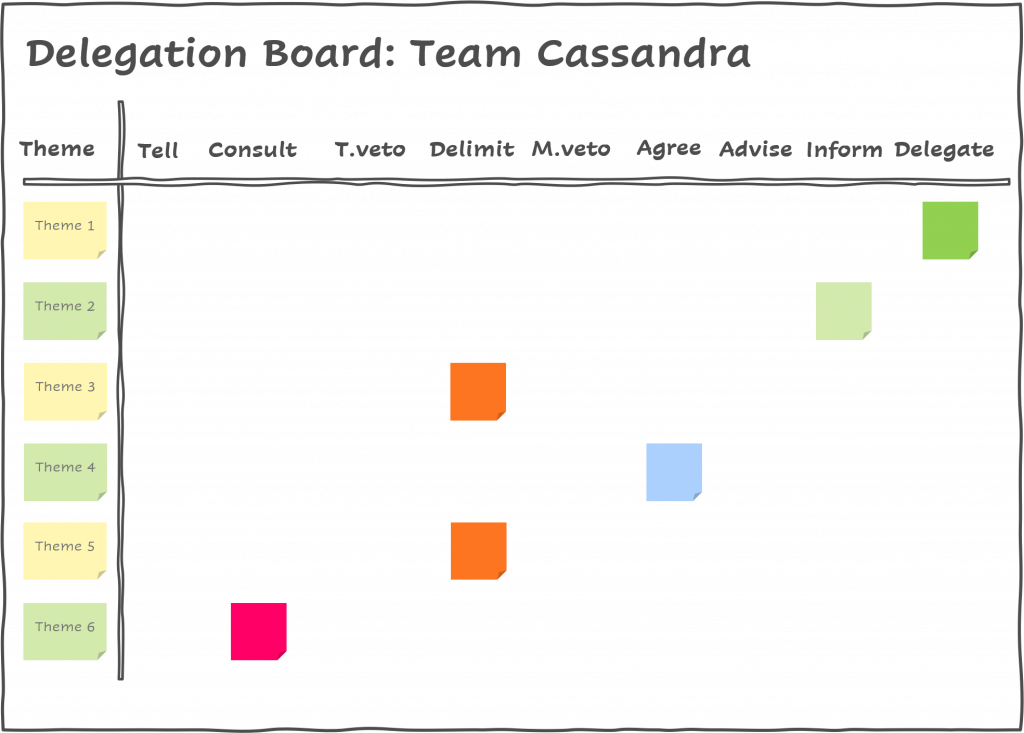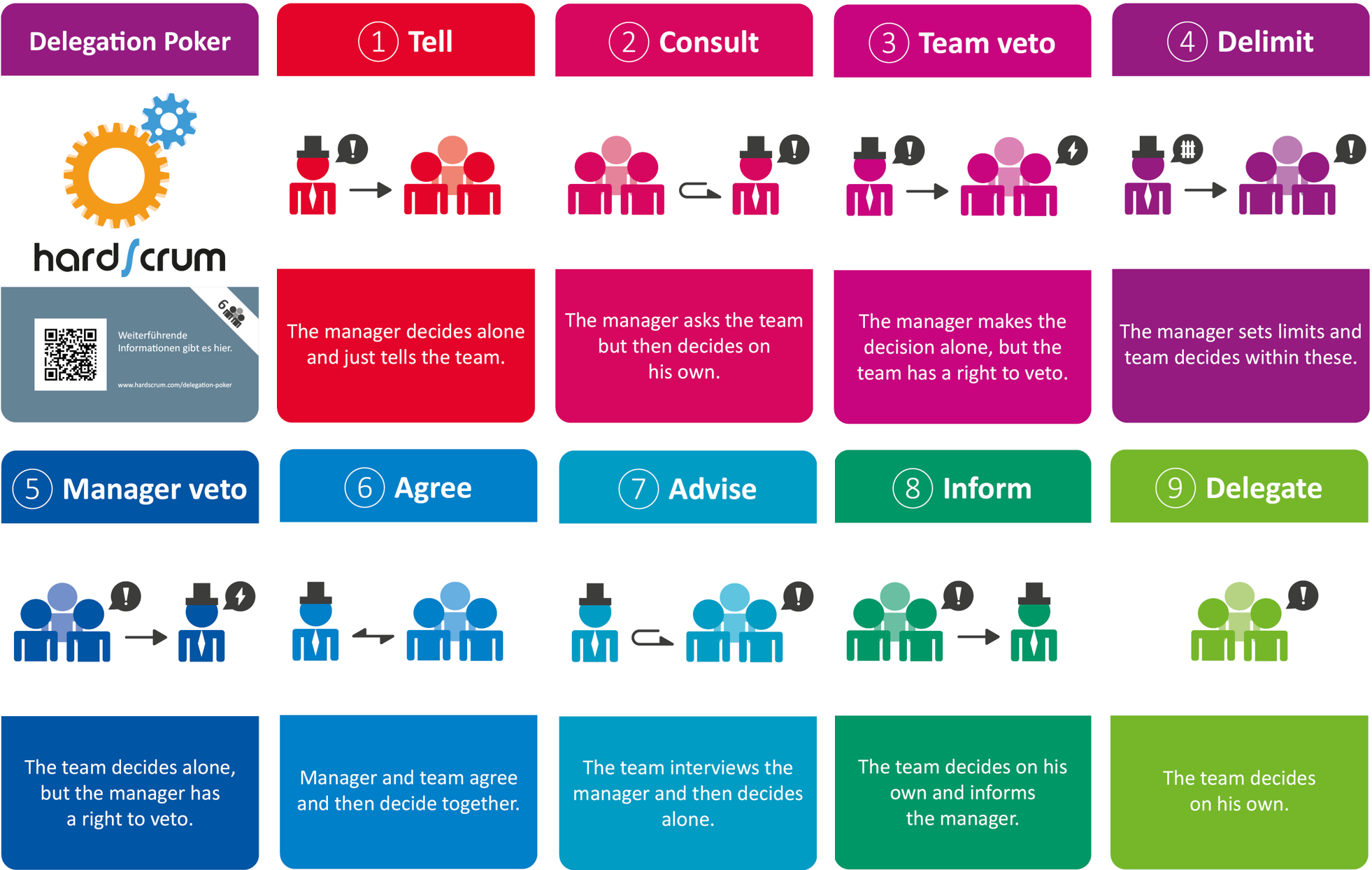Delegation Poker is a group-based discussion and negotiation technique for areas of responsibility between a manager and his team. Originally conceived by Jurgen Appelo, we’ve changed and adapted it.
Delegation of responsibility is not binary, i.e. “is the responsibility of the team” or “is the responsibility of the manager”. This is an oversimplification. Modern pragmatic teams and their servant leaders have the possibility to agree on the different areas of responsibility in different and specific ways. We distinguish the following possibilities here:
- Tell: the manager makes the decision alone and informs the team
- Consult: The manager consults the team and then decides alone
- Team veto: The manager makes the decision alone. The team has the right to veto
- Delimit: The manager sets limits. The team decides alone
- Manager veto: The team makes the decision alone. The manager has veto power
- Agree: Manager and team agree and decide together
- Advice: The team interviewsthe manager and then decides alone
- Inform: The team makes the decision alone and informs the manager
- Delegate: The team makes the decision alone
In a classical management-team relationship, the manager could make the decisions about the team’s responsibilities alone. However, we have found that it is much better to discuss and make the decisions together. In fact, it is often the case that the manager wants to delegate even more responsibility to the team than they feel currently comfortable with.
But why “group-based”?
- It avoids one-sided views (swarm intelligence).
- It promotes structured discussions in groups.
- Everyone in the group gets a better understanding about the discussed topic.
The anchor phenomenum makes it difficult to get real, individual assessments in group-based discussions. The anchor problem means, that the assessments by all discussion participants are subconsciously biased to the assessment of the first one, who initially explains his/her opinion (anchor). To avoid this effect, everybody has to make his individual decision secretly before sharing it with the other group members. This is exactly what Delegation Poker cards are for.
The team first creates a list of responsibilities that exist in the context of the team’s working environment and makes them visible e.g.by sticky notes (left column on the Delegation Board). Responsibilities could be e.g. …
- Design of the working areas: Who sits and works where? Where and how are desks and office furniture placed?
- Purchase of new office furniture and team accessories
- Vacation and substitution arrangements
- Who does home office and when
- Working time regulations
- Hiring of new employees
- Evaluation of the achievement of performance targets
- Salary of employees

And how does it work?
Just follow these simple and clear steps to successfully play Delegation Poker. It is best to stick strictly to it at the beginning and only change things if you really understand the system.
- Manager and every team member get a set of cards each.
- The manager explains one area of responsibility. The team may discuss briefly, that everybody has the same understanding.
- The group of all team members and the manager each choose a card that corresponds to their assessment.
- The cards are turned over at the same time so that they can be seen by all participants.
- The group discusses about the different assessments, especially outliers.
- The group repeats these steps until the assessments converge.
- Make the decision transparent on the Delegation Board
Recommendation: Set a timebox for each estimation round (e.g. 10 minutes). When the time runs out, you can decide with the team to invest another 10 minutes or to continue.
Get your deck of Delegation Poker cards at hardScrum.
Further suitable links:
| Events | Roles | Groups | Artifacts |
| Team Planning
. .
|
Team Product Owner
. . |
Working Team
. .
|
Team Backlog
. . |
